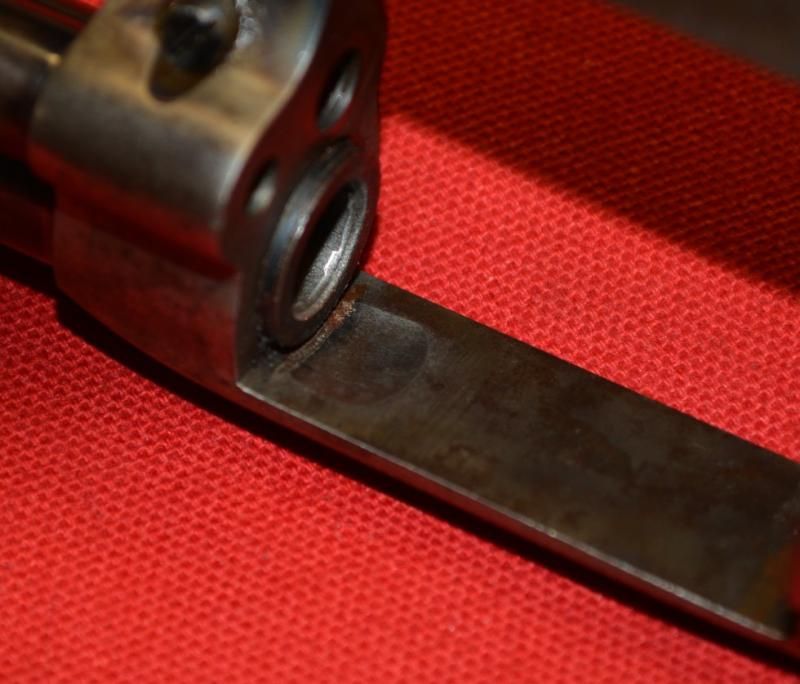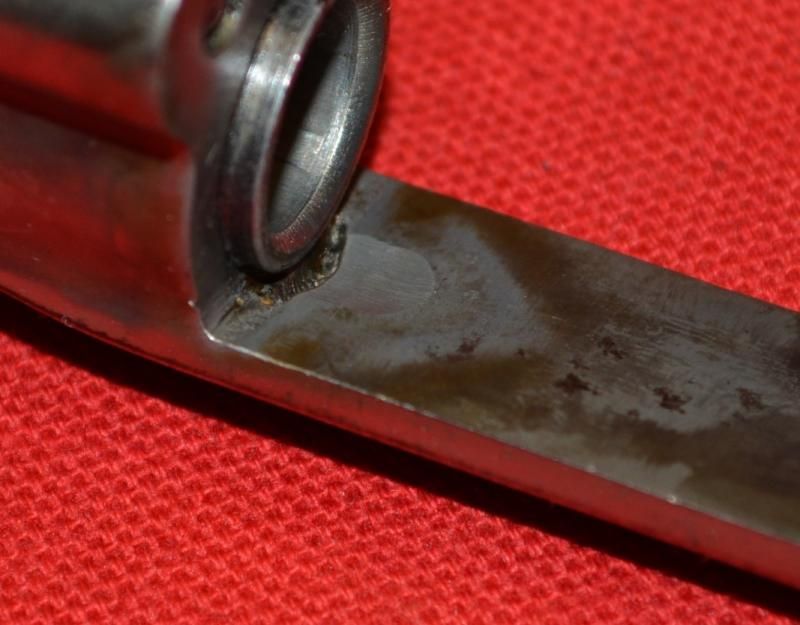Howdy
When you fire a cartridge, some of the high pressure gasses that push the bullet down the barrel get diverted and blast out of the barrel/cylinder gap. As the gasses exit the b/c gap, particles of carbon and vaporized lead get deposited on the front of the cylinder, in a ring shape. That is what you see, the carbon and lead that has been deposited on the face of the cylinder. Completely normal, happens to some extent with all revolvers.
You will hear various solutions to remove the rings, but the bottom line is they will return every time you fire the gun. I gave up long ago trying to remove these rings. Once you have enough revolvers, you will too.
Are the cuts in the topstrap left by the tap that threaded the frame for the barrel?
Yes, that is exactly what they are. I have the same type of marks in some Rugers. Most taps have a tapered lead. When the frame is tapped for the barrel threads, the tap extends a few threads past the frame so the full profile can be cut. That is what you see, tooling marks left behind when the frame was threaded for the barrel. Notice the marks are tapered, because the front of the tap is tapered.
Years ago, many revolver makers put a relief cut on the underside of the top strap right where those marks are. The idea was, in Black Powder days, the relief cut gave the fouling some place to go so it would not bind the barrel/cylinder gap.
Here is the relief cut in a Colt Bisley from about 1906.
And here is the relief cut in a 2nd Gen Colt from 1968.
The relief cut never actually filled up with fouling, it really did not serve any purpose. But putting the relief cut there would have masked any tooling marks left behind from the frame tapping operation. Your 1979 Colt has no relief cut, so the tooling marks left behind by the tap are still there.
Smith and Wesson used to do the same thing, someplace I have a photo of the same type of relief cut in an old Smith.
By the way, these relief cuts do nothing to prevent flame cutting. You can see there is some flame cutting on both of these top straps.









